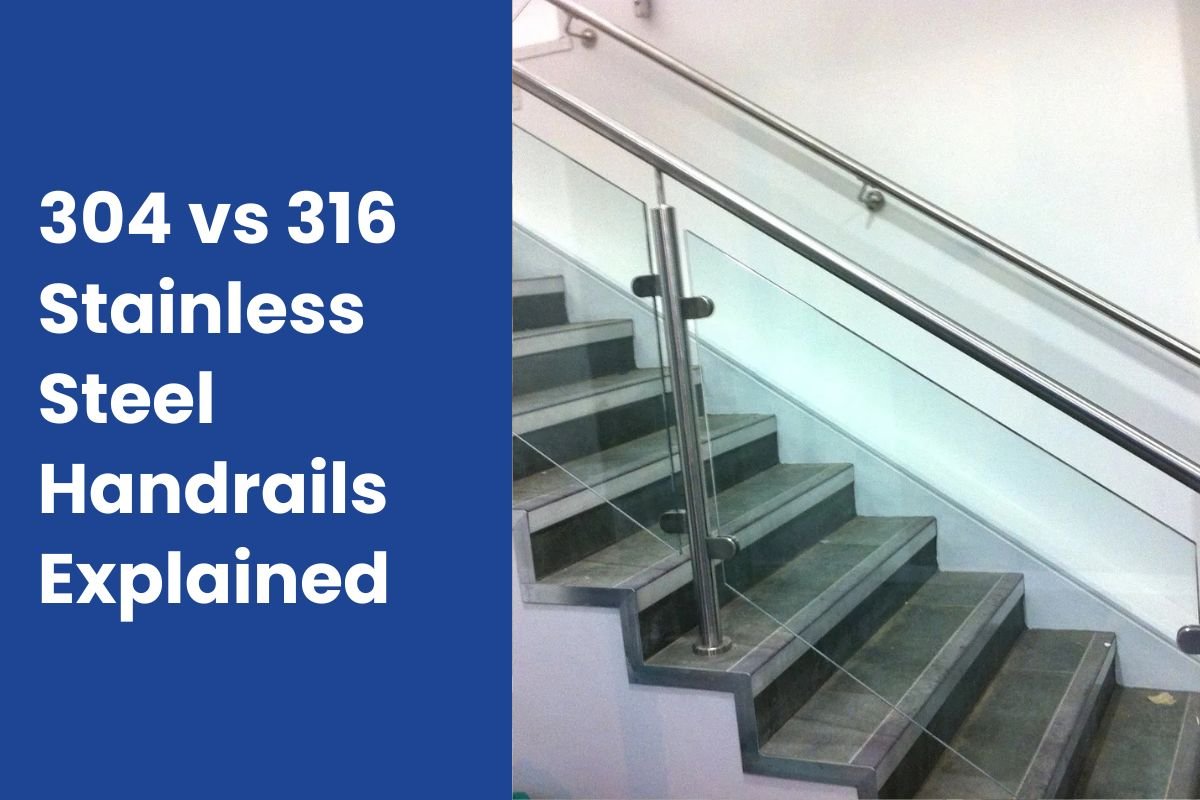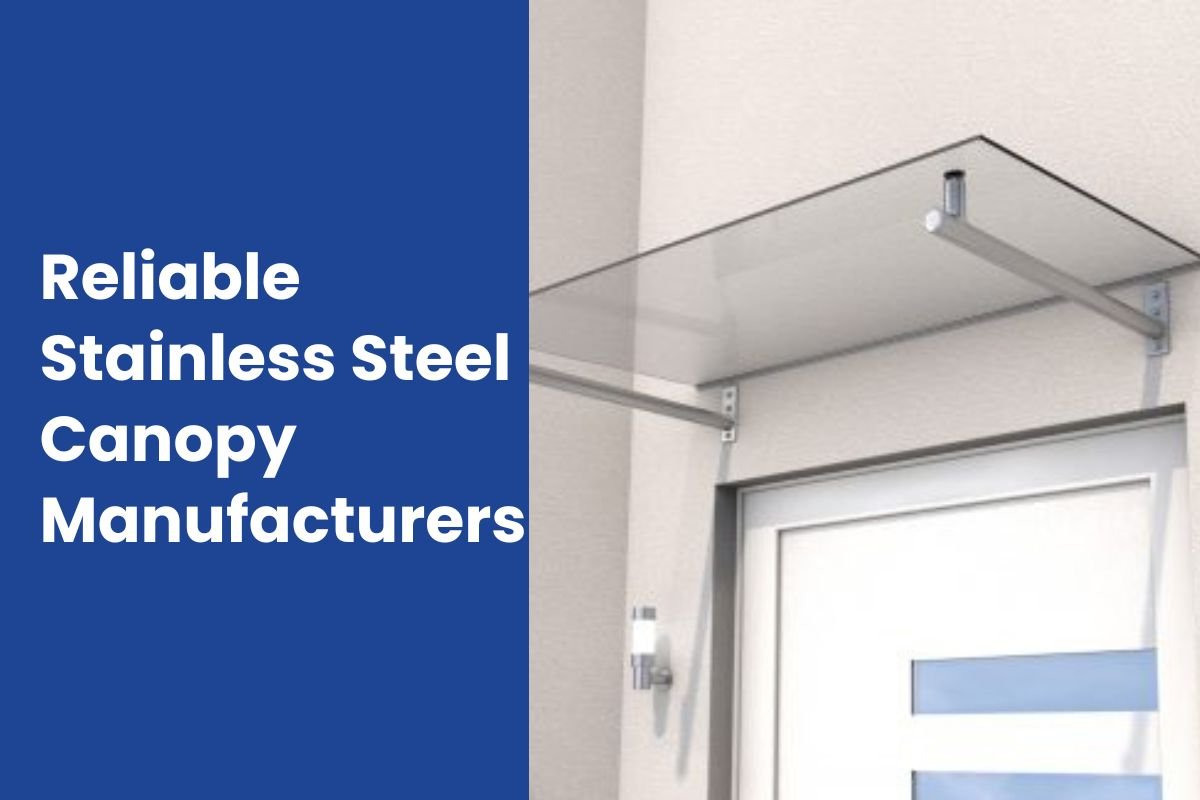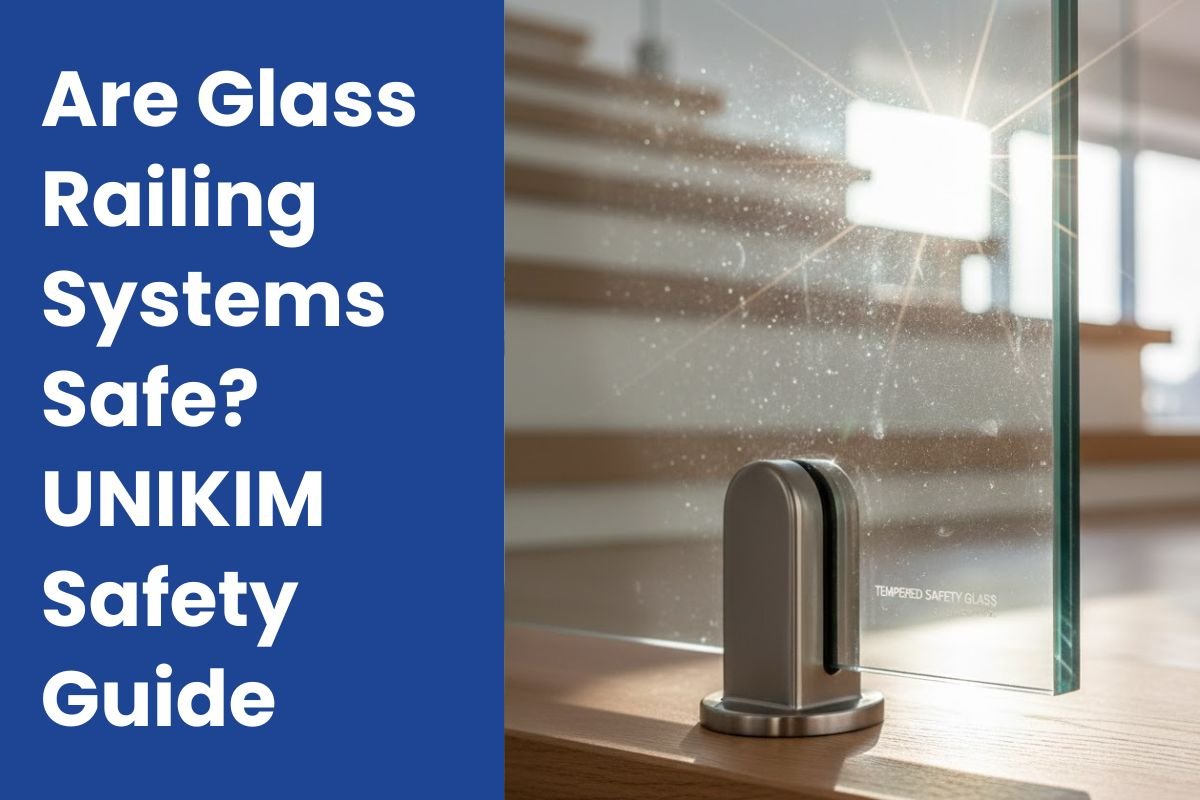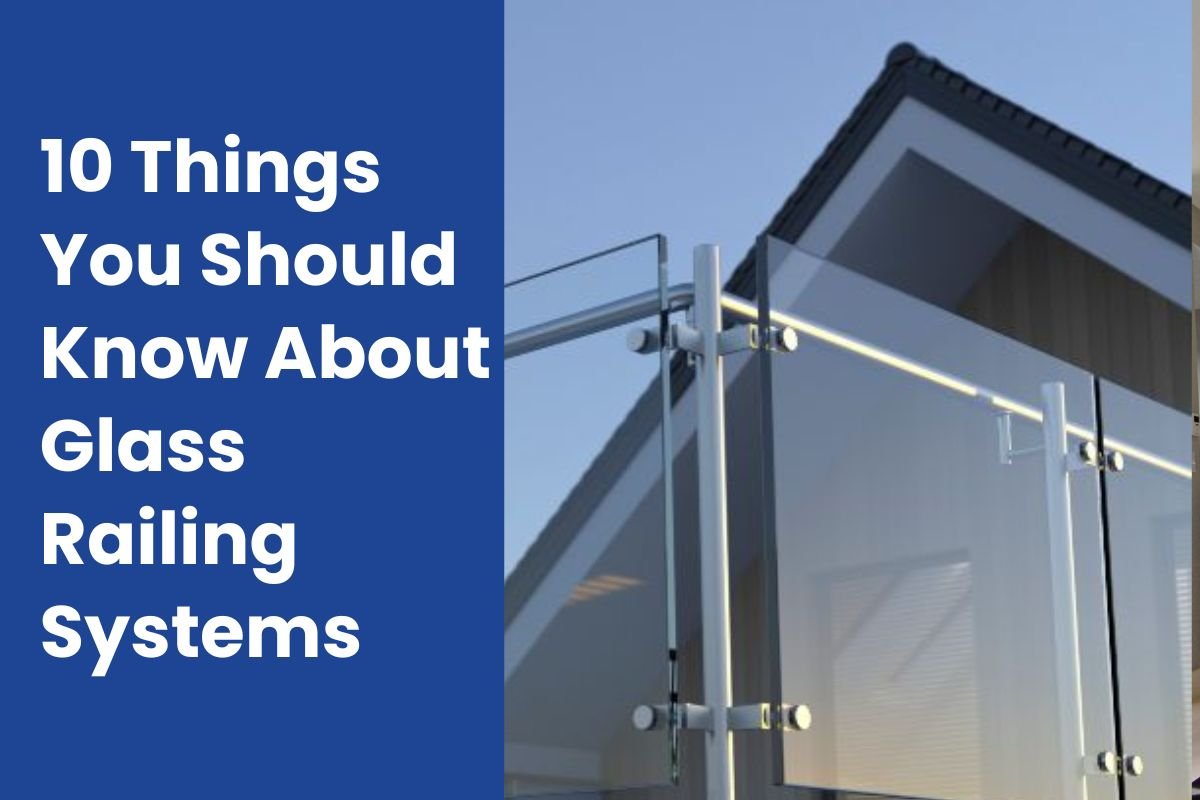When it comes to selecting the perfect material for your handrails, the debate between 304 vs 316 stainless steel handrails often takes center stage. These two grades of stainless steel are among the most popular choices for modern railing systems, offering a blend of durability, aesthetics, and functionality that can elevate any architectural project. Whether you’re renovating a coastal home, outfitting a commercial building, or simply upgrading your indoor stairs, understanding the nuances between 304 and 316 can make all the difference in ensuring long-term performance and value. At URailing, we specialize in high-quality stainless steel handrail systems that cater to diverse needs, and this comprehensive guide will break down everything you need to know to make an informed decision.
Stainless steel handrails have become a staple in contemporary design due to their sleek appearance and robust properties. But why the focus on 304 and 316 specifically? These grades stand out for their corrosion resistance, which is crucial in environments exposed to moisture, chemicals, or salt. Research shows that improper material selection can lead to premature degradation, costing homeowners and builders thousands in repairs. In this ultimate guide, we’ll explore the composition, properties, applications, and more, all backed by industry insights and practical advice. By the end, you’ll be equipped to choose between 304 vs 316 stainless steel handrails with confidence.
Understanding Stainless Steel: A Brief Overview
Stainless steel is an alloy composed primarily of iron, chromium, and other elements like nickel and molybdenum. The chromium content forms a passive oxide layer on the surface, which provides its signature resistance to rust and corrosion.
Stainless steel is categorized into different grades based on its chemical composition and properties. Among these, 304 and 316 stainless steel are the most widely used for handrails due to their excellent balance of strength, durability, and aesthetic appeal.
What is 304 Stainless Steel?
304 stainless steel is the most commonly used grade of stainless steel. It contains 18% chromium and 8% nickel, making it highly resistant to corrosion and oxidation in most environments.
Key Properties of 304 Stainless Steel
- Corrosion Resistance: Suitable for indoor applications and environments with minimal exposure to harsh chemicals or saltwater.
- Durability: Offers excellent strength and longevity, making it ideal for handrails in residential and commercial settings.
- Aesthetic Appeal: Has a polished, shiny finish that enhances the visual appeal of any space.
- Cost-Effective: More affordable than 316 stainless steel, making it a popular choice for budget-conscious projects.
Applications of 304 Stainless Steel Handrails
- Indoor Staircases: Perfect for homes, offices, and public buildings.
- Commercial Spaces: Widely used in shopping malls, hotels, and restaurants.
- Light Industrial Settings: Suitable for factories and warehouses with controlled environments.
For more information on 304 stainless steel handrails, check out our Stainless Steel Handrail System.
What is 316 Stainless Steel?
316 stainless steel is often referred to as “marine-grade stainless steel” due to its superior resistance to corrosion in harsh environments. It contains 16% chromium, 10% nickel, and 2% molybdenum, which enhances its ability to withstand corrosive elements like saltwater and chemicals.
Key Properties of 316 Stainless Steel
- Exceptional Corrosion Resistance: Ideal for outdoor and marine applications where exposure to saltwater, chlorine, or chemicals is common.
- Durability: Offers superior strength and longevity, even in extreme conditions.
- Aesthetic Appeal: Maintains its polished finish over time, making it a premium choice for high-end projects.
- Higher Cost: More expensive than 304 stainless steel due to its enhanced properties.
Applications of 316 Stainless Steel Handrails
- Outdoor Railings: Perfect for balconies, decks, and pool areas.
- Marine Environments: Widely used in docks, piers, and coastal properties.
- Chemical Plants: Suitable for industrial settings with exposure to corrosive substances.
Explore our range of 316 stainless steel handrails in our Product Category: Handrail Bracket.
What is Stainless Steel and Why Use It for Handrails?
Stainless steel is an iron-based alloy renowned for its resistance to rust and staining, thanks to the addition of chromium—at least 10.5% by weight—which forms a passive oxide layer on the surface. This layer self-heals when damaged, providing ongoing protection against environmental factors. For handrails, this material is particularly advantageous because it combines strength with low maintenance, making it suitable for both residential and commercial settings. Unlike wood or iron, stainless steel doesn’t warp, rot, or require frequent painting, ensuring a timeless look that aligns with modern minimalist designs.
Diving deeper, stainless steel comes in various grades, classified by their microstructure and alloying elements. The austenitic family, which includes 304 and 316, is non-magnetic and offers excellent formability, allowing for intricate designs in handrail components like brackets and balusters. At URailing, our products leverage these properties to deliver seamless installations that enhance safety without compromising style. Industry data indicates that stainless steel handrails can last over 50 years with proper care, far outpacing alternatives like aluminum or galvanized steel in corrosive environments.
The appeal of stainless steel for handrails extends to its hygienic qualities, as the smooth surface resists bacterial growth, making it ideal for high-traffic areas like hospitals or public spaces. Moreover, its recyclability aligns with sustainable building practices, with up to 60% of new stainless steel coming from recycled sources. When comparing 304 vs 316 stainless steel handrails, it’s essential to consider how these base properties are enhanced by specific alloy additions, which we’ll explore in the following sections.
Key Differences Between 304 and 316 Stainless Steel Handrails
When pitting 304 vs 316 stainless steel handrails against each other, the differences boil down to composition, performance, and suitability. Starting with composition: 304 contains 18% chromium and 8% nickel, while 316 has 16% chromium, 10% nickel, and 2% molybdenum. This small addition of molybdenum in 316 dramatically improves its resistance to corrosive agents like chlorides and acids.
304 vs 316 Stainless Steel Handrails: A Detailed Comparison
To help you decide which material is best for your project, let’s compare 304 and 316 stainless steel based on key factors:
Corrosion Resistance
- 304 Stainless Steel: Resists corrosion in most indoor environments but may tarnish or rust when exposed to saltwater or harsh chemicals.
- 316 Stainless Steel: Offers superior corrosion resistance, making it ideal for outdoor, marine, and industrial applications.
Cost
- 304 Stainless Steel: More affordable, making it a cost-effective choice for indoor and light-duty applications.
- 316 Stainless Steel: Higher cost due to its enhanced properties, but worth the investment for harsh environments.
Durability
- 304 Stainless Steel: Durable and long-lasting in controlled environments.
- 316 Stainless Steel: Exceptionally durable, even in extreme conditions.
Aesthetic Appeal
Both grades offer a polished, shiny finish, but 316 stainless steel maintains its appearance better in corrosive environments.
For a visual comparison, watch our video on YouTube: Unikim Railings.
To visualize these differences, consider the following table:
| Property | 304 Stainless Steel | 316 Stainless Steel |
|---|---|---|
| Chromium Content | 18% | 16% |
| Nickel Content | 8% | 10% |
| Molybdenum Content | 0% | 2-3% |
| Corrosion Resistance | Good in mild environments | Excellent in chloride environments |
| Cost | Lower | Higher (20-30% more) |
| Typical Use | Indoor, urban handrails | Coastal, marine handrails |
This comparison highlights why choosing between 304 vs 316 stainless steel handrails depends on your specific needs.
Choosing the Right Material for Your Handrails
The choice between 304 and 316 stainless steel depends on your project’s specific requirements. Here are some guidelines to help you decide:
When to Choose 304 Stainless Steel
- Indoor applications like staircases, balconies, and railings in homes or offices.
- Budget-conscious projects where cost is a primary consideration.
- Environments with minimal exposure to corrosive elements.
When to Choose 316 Stainless Steel
- Outdoor applications like pool railings, coastal properties, and industrial settings.
- Projects where durability and corrosion resistance are top priorities.
- High-end projects where aesthetics and longevity are crucial.
For expert advice, visit our Contact Page.
Installation Tips for Stainless Steel Handrails
Proper installation is key to ensuring the longevity and safety of your stainless steel handrails. Here are some tips:
Summary
Choosing between 304 and 316 stainless steel handrails depends on your project’s specific needs. 304 stainless steel is a cost-effective option for indoor applications, while 316 stainless steel offers superior durability and corrosion resistance for outdoor and harsh environments.
At Urailing, we provide a wide range of stainless steel handrail systems to meet your requirements. Explore our Product Category: Handrail Brackets and Baluster Brackets to find the perfect solution for your project.
For more information or to get expert advice, visit our Contact Page.
FAQs
Which is better for outdoor use: 304 or 316 stainless steel?
316 stainless steel is better for outdoor use due to its superior resistance to corrosion, especially in environments exposed to saltwater or chemicals.
Is 316 stainless steel worth the extra cost?
Yes, if your project involves harsh environments or requires exceptional durability, 316 stainless steel is worth the investment.
Can 304 stainless steel be used outdoors?
While 304 stainless steel can be used outdoors, it may require more maintenance and is better suited for indoor applications.
How do I clean stainless steel handrails?
Use a mild detergent and warm water to clean stainless steel handrails. Avoid abrasive cleaners that can damage the surface.









